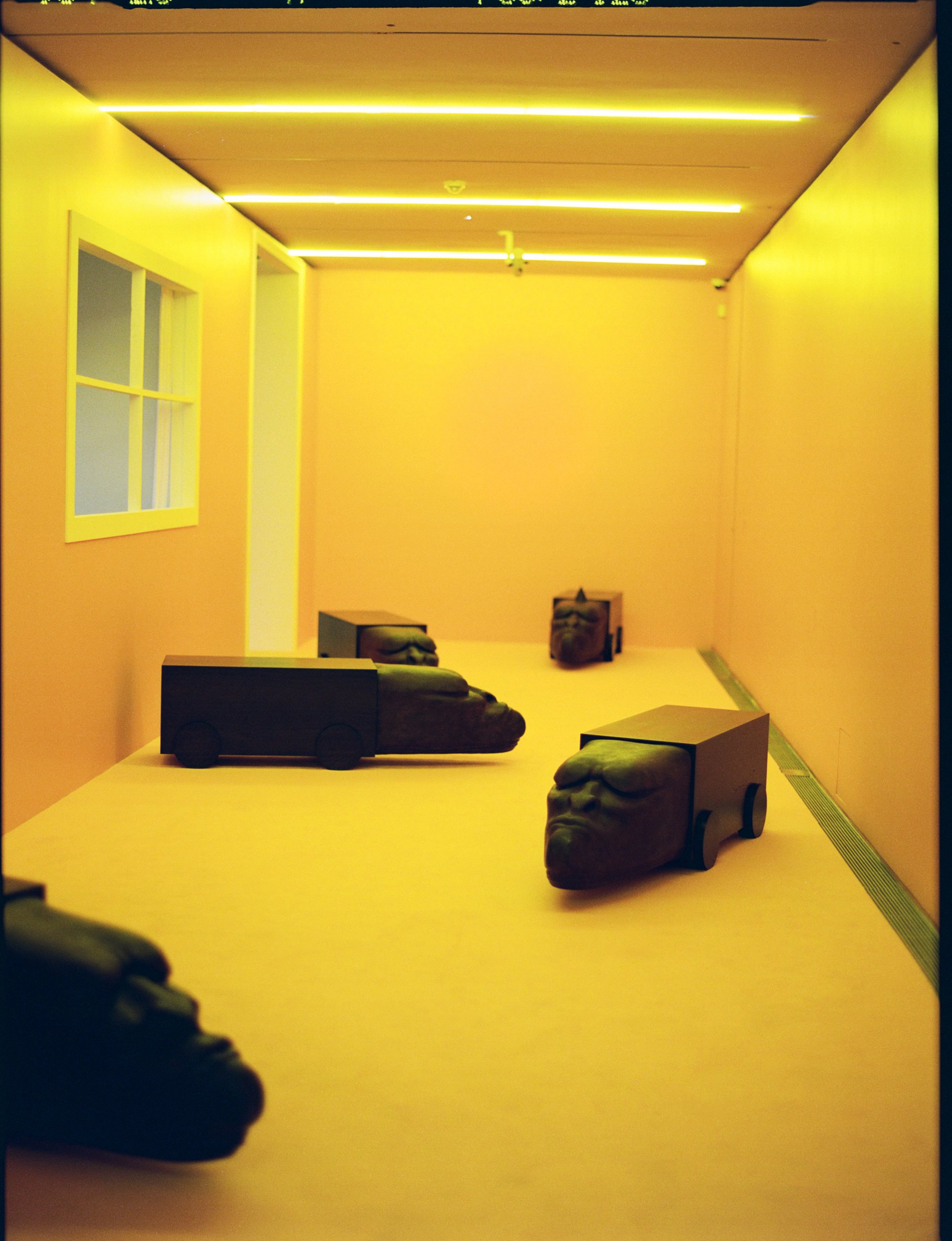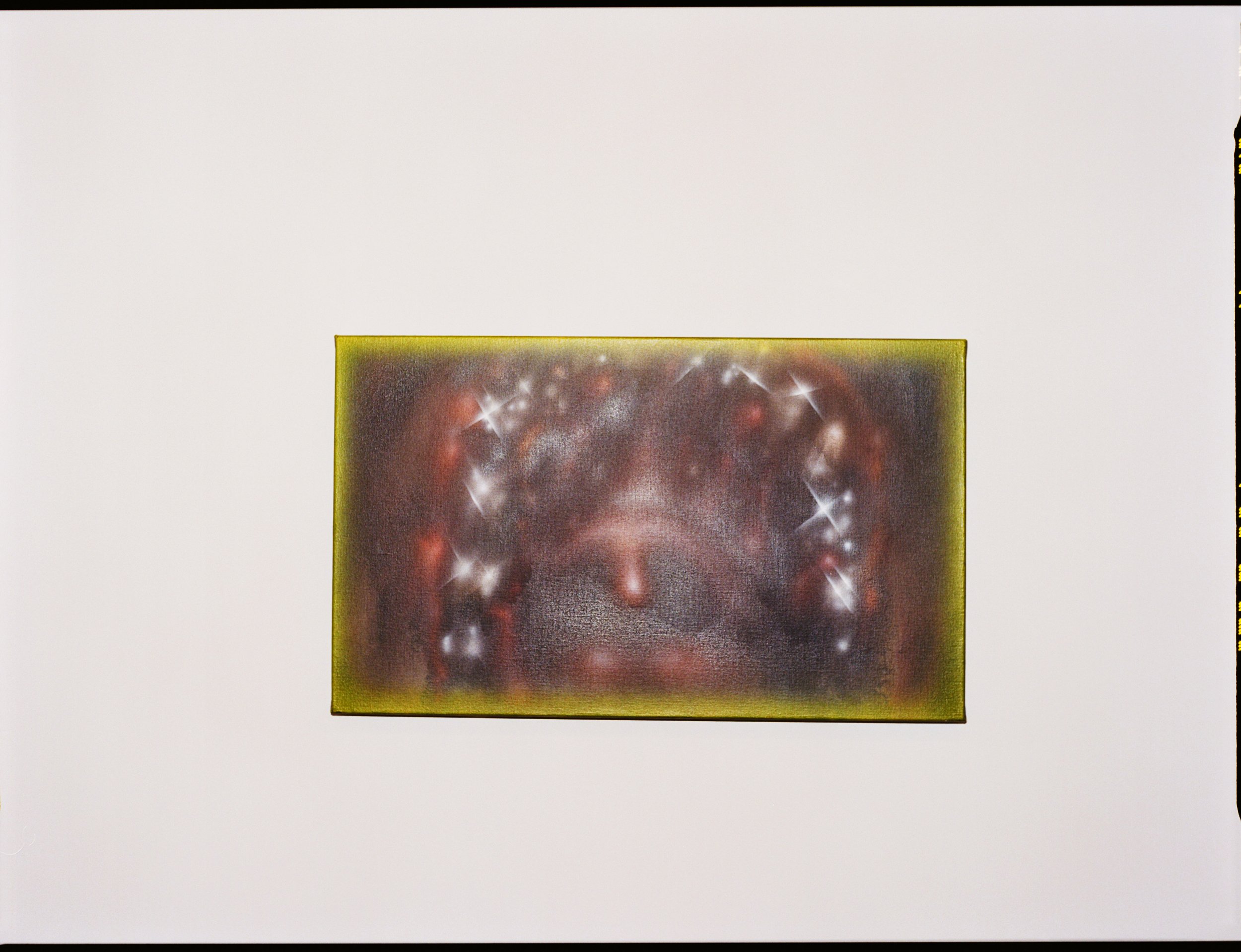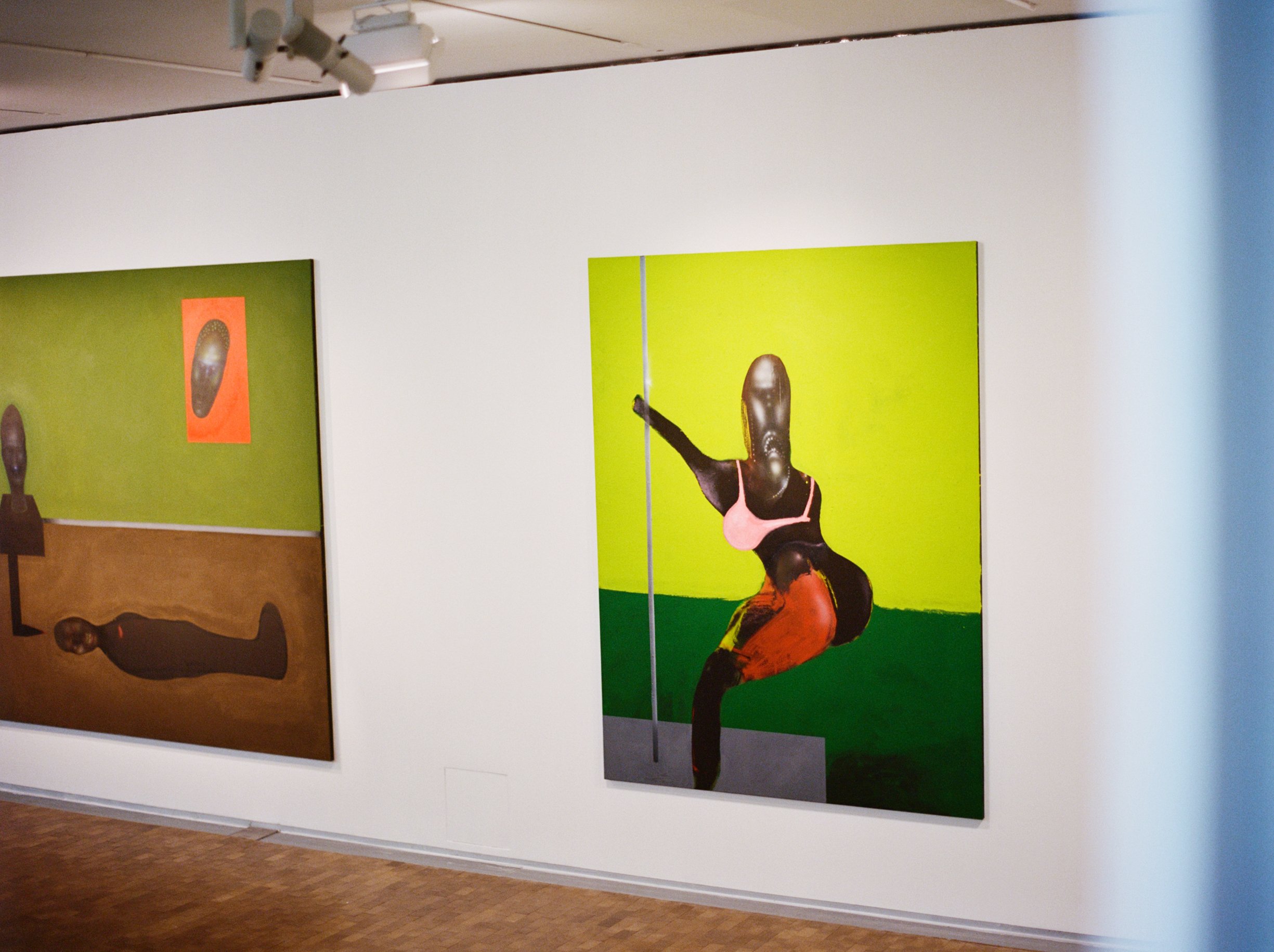Pol Taburet: OPERA III: ZOO “The Day of Heaven and Hell” @ Lafayette Anticipations, Paris
OPERA III: ZOO “The Day of Heaven and Hell” at Lafayette Anticipations is Pol Taburet’s first institutional solo exhibition. It explores the place of myths, fantasies, and traumas in our understanding of the world. The 26-year-old French artist, who you might have seen on the cover of Numéro Art 10, has rapidly gained attention with his youthful and hallucinatory style. He was notably exhibited at the Bourse de Commerce - Pinault Collection in 2020, at Clearing, Los Angeles and Balice Hertling, Paris.
Portrait of Pol Taburet. Image: Zelinda Zanichelli.
OPERA III: ZOO “The Day of Heaven and Hell” is conceived as an immersive exhibition, imagined as a living space by the artist and curator Elsa Coustou. With electric blue and green walls, carpeted floors and large windows, as well as larger-than-life sculptures of everyday objects - a giant pile of nails found in Fork Melody (2023) and a dining room table with hyper-realistic and cartoonish legs in My dear (2023) - the two-floors exhibition space reveals one of Pol Taburet’s major references: the screen.
My dear, 2023. Wood, resin, and silicone. Courtesy of the artist and Balice Hertling, Paris Produced by Lafayette Anticipations – Galerie Lafayette. Image: Zelinda Zanichelli.
It also engages with the artist’s own childhood home and family. The five toy trains on the floor that comprise Soul trains (2023) - composed of a bronze head sculpted after the artist’s face - and the forest of five cypress trees in the installation Ô…Trees (2023) represent the five members of the artist's family. The nails that make up Fork Melody are damaged by time as a metaphor for family traumas, regrets, and secrets.
Fork Melody, 2023. Steel. Courtesy of the artist and Balice Hertling, Paris. Produced by Lafayette Anticipations – Fondation Galeries Lafayette Image: Zelinda Zanichelli.
With their sometimes threatening, sometimes gentler faces, these installations are representative of the diversity of Taburet's inspirations. Soul trains pays homage to the US television show of the same name that was the first, in the early 1970s, to focus on Black music and programme only African-American artists.
The small forest is clearly inspired by Constantin Brancusi’s Bird in Space (1941). Placed at the very beginning of the exhibition, it introduces the themes of fantasies and invites us to enter into Taburet’s surrealist universe.
Right & Left: Soul trains, 2023. Wood and bronze. Courtesy of the artist, Balice Hertling, Paris and Mendes Wood DM, São Paulo, Brussels, New York Image: Zelinda Zanichelli.
Ô… Trees, 2023. Resin. Courtesy of the artist, Balice Hertling, Paris and Mendes Wood DM, São Paulo, Brussels, New York Image: Zelinda Zanichelli.
These works, as disturbing as they are grotesque, give us a glimpse of Taburet's bizarre, dreamlike world, in which he focuses on the relationship with the other, represented as both a source of sensual pleasure and danger. The paintings Make it rain (2023) and Götterspeise (2021), for instance, depict scenes of ambivalence between fear, violence and desire between beings. In Götterspeise, Taburet even reappropriates the mythological figure of the she-wolf who is said to have raised Remus and Romulus to depict a cannibalistic relationship.
Make it rain, 2023. Acrylic, oil pastel and alcohol-based paint on canvas. Courtesy of the artist, Balice Hertling, Paris and Mendes Wood DM, Sāo Paulo, Brussels, New York. Image: Zelinda Zanichelli.
Taburet’s paintings and sculptures also question the relationship between the body – both human and animal - and the object. In Belly (2023), the fountain recalls the breasts and hips of a woman and echoes Aphrodite emerging from the waters in Sandro Botticelli’s infamous Uffizi picture, The Birth of Venus (1485).
Returning again to Ô… Trees, the shape of the sculptures that make up the little forest recall the form of dildos, becoming a place tinged with eroticism. Sexual objects are also represented in the paintings Toys and a Knife (2022) and Our Turf (2021), showcased in the adjacent room.
Belly, 2023. Bronze, steel finish. Private collection, China. Image: Zelinda Zanichelli.
Born in 1997, Taburet lives and works in Paris. He received his master's from the École Nationale Supérieure d’Arts de Paris-Cergy in 2021 and was awarded the Reiffers Art Initiatives Prize in 2022.
Taburet’s inspirations are wide-ranging, resulting in a unique syncretic visual language. These diverse references range from South Park and Disney movies, Francisco de Goya and German Expressionists, and voodoo beliefs and practices from Guadeloupe - paying tribute to his mother and his Caribbean background.
Near-abstract, Taburet’s paintings are often characterised by a strong, vivid and almost monochromatic background, where solitary figures stand out, resembling human and animal forms. As terrifying as they are seductive, these figures recall the mythological furies, as well as the soucougnan and the dorlis, emblematic cultural characters deeply rooted in Caribbean popular beliefs. They seem to be caught in an in-between world, between life and death or heaven and hell, according to the title of the exhibition.
In Parade (2022), for example, Taburet references the mythological characters of Orpheus and Eurydice in Black Orpheus, a musical film by Marcel Camus which won the Palme d’Or at the Cannes Film Festival in 1959. The film's particularity is that the well-known myth is set in the Rio carnival and Brazilian favelas and is played by non-professional Black actors. Here, Taburet presents his two figures, and their tragic destiny, with bright colours and glittering bodies - giving primacy to our imagination.
Installation shot of My Eden’s Pool, 2022 (L) (Acrylic, oil pastel and alcohol-based paint on canvas. Pinault Collection) and Parade, 2022 (R) (Acrylic and alcohol-based paint on canvas. Samdani Art Foundation.) Image: Zelinda Zanichelli.
Through these mutant creatures, Taburet explores his spiritual heritage but sometimes also evokes a much more contemporary culture - with pole-dancing bars from The Stripper (2023), nightclubs, or mouths filled with shiny jewels in A sacred pit (2021) - challenging conceptions of beauty and sexuality and transforming the absurd into the erotic.
Right: Installation shot of Sunset II, 2021. Acrylic and alcohol-based paint on canvas. Private collection, Paris. Image: Zelinda Zanichelli.
Left: Installation shot of The Stripper, 2023 (R). Acrylic, oil pastel, alcohol, paint. Courtesy of the artist. Image: Zelinda Zanichelli.
While it may give you hallucinations, OPERA III: ZOO “The Day of Heaven and Hell” is entirely worth seeing. This exhibition is an unparalleled opportunity to dive into Taburet’s alternative worlds.
Many thanks to Zelinda Zanichelli for providing all the artwork photographs on behalf of MADE IN BED. To view more of Zelinda’s photographs, head to her Instagram or website.
Clara Eugène
Contributing Writer, MADE IN BED












